
Top 10 Best Dog Types For You To Choose From
There are many different dog types out there, each with its own unique personality traits. Humans have crafted over 400 dog breeds that offer so much variety by tinkering with genetics.
As humans advanced in sophistication, so did their dogs. Specific breeds of dogs eventually emerged, custom-bred to meet the needs and circumstances of the breeders.
Dogs are intelligent animals that can be great companions. The Golden Retriever is not only easily trainable but also makes a fantastic family dog. Their exceptional emotional intelligence makes them perfect candidates for assistance dogs, even though they were initially bred as gun dogs.
They can think independently and make quick decisions when working, which is essential in many roles. A very affectionate and popular breed, the Golden Retriever is highly regarded for its intelligence. They can learn well over 200 commands, making them indispensable companions in the home and the workplace.
Different research groups and others have been interested in identifying genes that define the differences in body size, shape, and appearance between breeds for several years. Dog breeds vary not only in overall body size but also in leg length, head shape, and many other body features.
All of which are controlled at least in part at the genetic level. The amount of morphologic variation observed in the dog is reported to surpass that of all living land mammals. Dogs come in many shapes and sizes.
The retrievers, shepherds, and setters are more prominent and often weigh 65 to 100 pounds (30 to 45 kilograms). Finally, giant breeds, such as the Mastiff, Komondor, and Saint Bernard, can approach or exceed 200 pounds (91 kilograms).
Of course, sizes vary within breeds, with males being more significant than females. Mixed-breed dogs include all size ranges as well. So let Learning Mole delve into the 10 different types we have decided to introduce to you and make sure to let us know which one appealed to you the most.
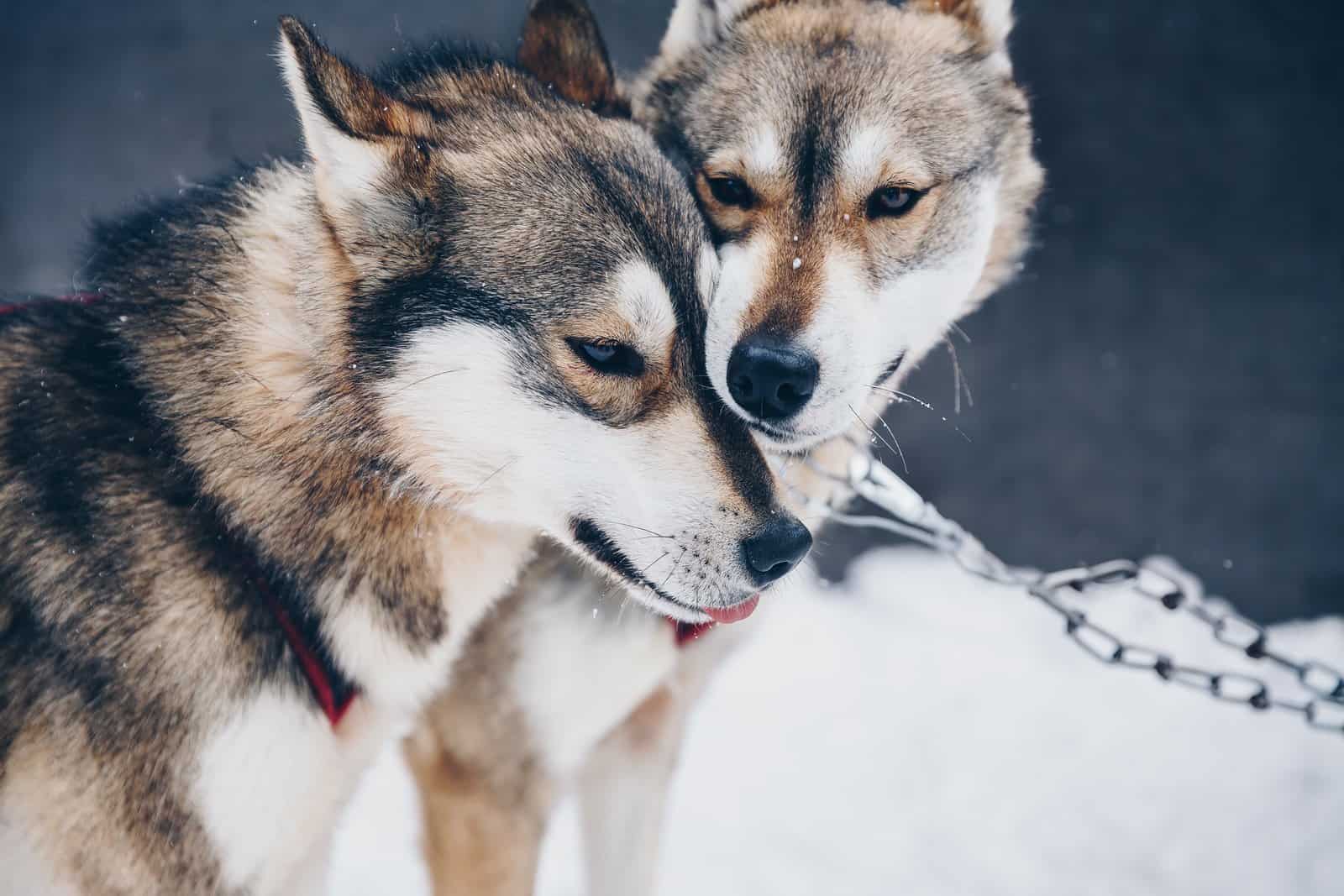
Dog Types: Golden Retriever
The Golden Retriever, a gorgeous Scottish sheepdog, is one of the most popular breeds in America. Although they are severe workers for hunting or farm work, they are used as guide dogs for the visually impaired.
They also participate in obedience and other competitive activities and have a great zest for life when not working. Although Labradors and golden retrievers are frequently confused, they have distinct features and personalities.
A Lab has a short, smooth coat, while a golden one has fluffy, downy fur. Their muzzles are also different: goldens’ have a narrow, lean jaw, whereas Labs’ have a broader, jowlier jaw. The family dog of choice is the Golden Retriever.
They are eager to please. Goldens are great for kids of all ages. Goldens are cheerful, loyal, friendly and playful. This intelligent and adaptable breed can thrive in a variety of families. To keep them healthy and prevent boredom, you need to provide them with some exercise.
When properly trained, they can be trained to perform a variety of tasks. Their coats require regular brushing to prevent knots and tangles. The Golden Retriever is one of the most popular dog breeds in the world.
Are golden retrievers aggressive? No, not inherently. On the contrary, golden retrievers are amiable dogs who are social, affectionate, and ? gentle creatures.
Most dog breeds strive to please their owners, but Golden Retrievers are always willing to learn new skills and take things a step further. They will never refuse orders because they want to do what you say! Golden retrievers can be trained to open doors or retrieve objects when needed.
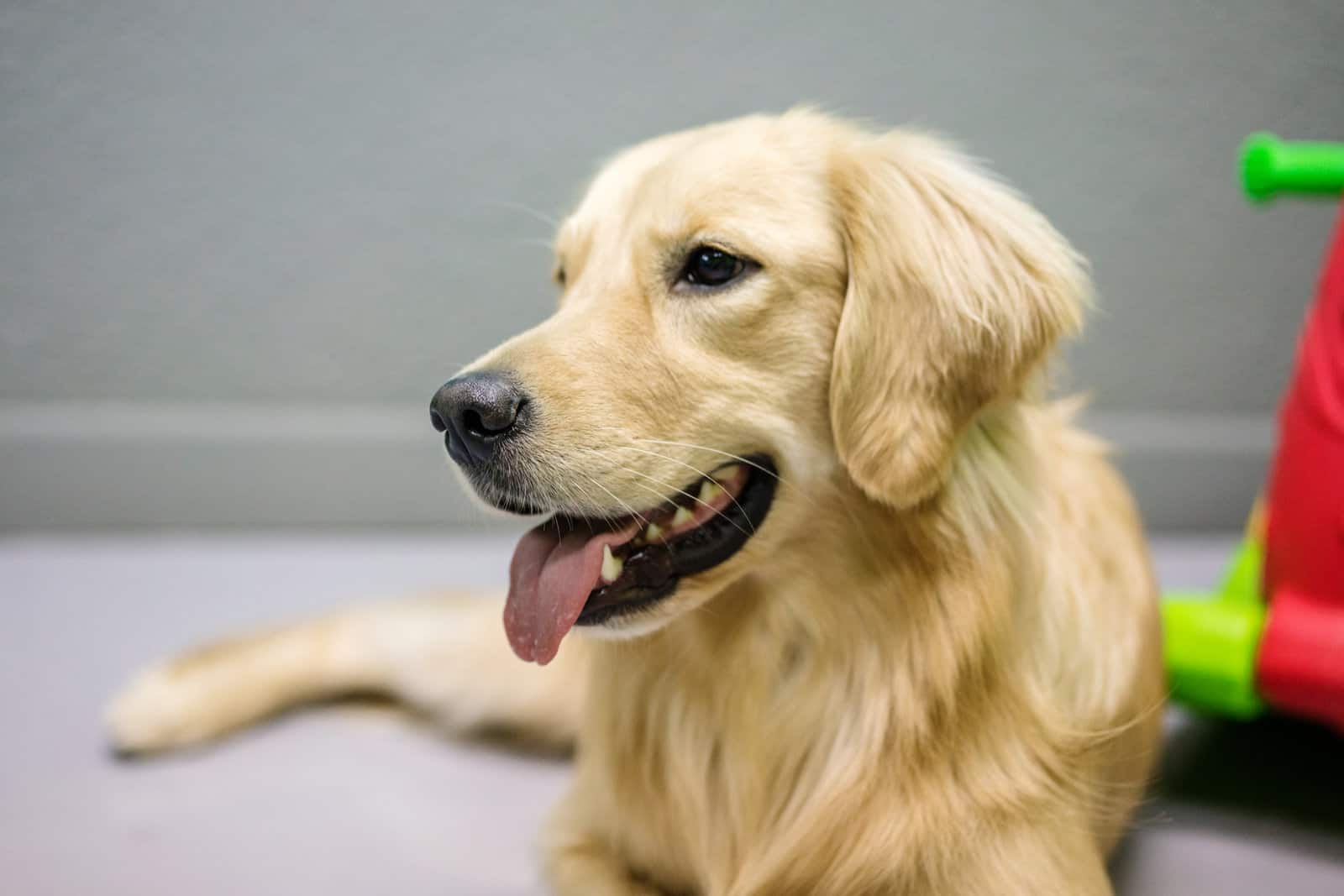
Labradoodle: What No One Is Talking About
The Labradoodle, a descendant of the Labrador Retriever, quickly gained popularity and is now one of the most sought-after “Doodle breeds.” These dogs are frequently the result of a Poodle and a Labrador Retriever breeding.
Nonetheless, multigenerational breeding has begun to produce a viable and distinguishable breed. Because of the popularity of Labradoodles, the practice of mating two distinct purebred dogs to create a brand-new, cutting-edge designer breed was born.
Pooches, shampoos, Schnoodles, and Goldendoodles are just a few breeds prone to serious inherited behavioural and health problems. Labradoodles are gentle and loving pets. Labradoodles are known for their gentleness, even temperaments, and lack of aggression.
Labradoodles, in fact, are becoming a more popular choice for a family pet due to their affectionate personalities and playful spirits. The breed usually gets along well with both people and other animals and is always eager to meet new people.
They are approachable, outgoing, and gentle with children. Labradoodles are also very active and enjoy exercising with their families. Because of their gentle and loving nature, they make excellent therapy dogs. They are very trainable and can perform a variety of tricks.
Labradoodles, as friendly, intelligent, and enthusiastic dogs, will make friends with anyone up for a game of tug-of-war or other pets to give. Because of their high energy and playful nature, they are devoted, loving, curious, and active, making them the ideal companion for new owners.
While Labradoodles were initially bred as guide dogs, they also make excellent therapy dogs. These intelligent dogs are not only wonderful companions, but they are also well-suited to assisting people with conditions such as autism, physical disabilities, or depression.
They also provide emotional support due to their affectionate and loving nature. This breed is also a tracking dog due to its intelligence and strong work ethic. Labradoodles make excellent family dogs with the proper training, which explains why this cross is so popular.
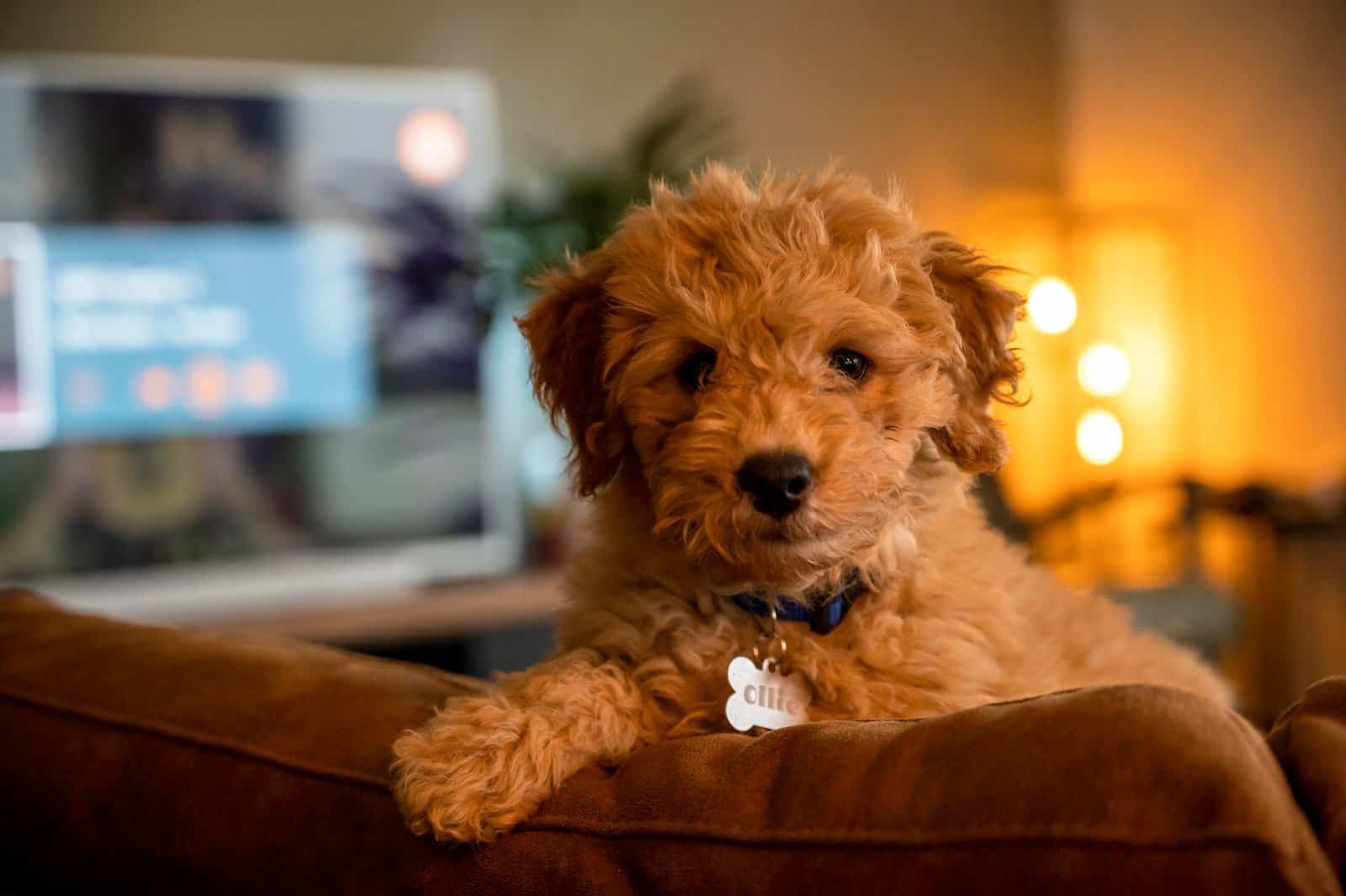
Poodle: The Next Big Thing in Poodle
Poodles are amiable dogs. They’re usually great with other dogs and get along well with cats! It shouldn’t be too difficult if you already have another pet and want to add a Toy Poodle to the mix.
Poodles are those curly-haired dogs that you’d love to have as a companion because they’re full of energy, stylish, and highly intelligent. Aside from his curly hair and regal demeanour, he is a happy and loving soul who would do anything to make you happy.
Make sure to distinguish between poodles and other dog breeds. There are numerous distinctions between doodles and poodles. Poodles are a purebred dog breed recognised by the American Kennel Club and countless other organisations.
On the other hand, doodles are hybrid or cross-bred cross-bred dogs that may or may not be recognised as their own breed. Furthermore, poodles are more hypoallergenic than other doodle breeds. On the other hand, doodles are bred for allergy-prone homes and families.
While you may not notice this unless you adopt a doodle or Poodle, there are some behavioural differences between the two dogs. Poodles are thought to be brilliant dogs that are simple to train. At the same time, many doodle breeds may lack the intelligence of the average standard Poodle.
Poodles are also known to get along with other animals in the home if they have been appropriately socialised with them. Because Poodles are sensitive to noise, they make excellent watchdogs, alerting their owners if a stranger approaches.
Poodles are playful and daring. Given proper socialisation as puppies, they generally get along well with other pets and children. They require daily grooming to keep their coat in tip-top shape. They will frequently require clipping and shaping by a professional groomer throughout the year.
Some people believe Poodles are fragile indoor creatures because of their distinctive haircuts and distinct canine grooming routine. They are active, outgoing, and friendly dogs who enjoy running, romping and playing.
Furthermore, because Poodles were initially used to assist in hunting waterfowl, they make excellent watchdogs. This breed is alert and interested and will alert its owners if a person or animal approaches. The Poodle’s body type reflects its athletic origins as a working retriever breed.
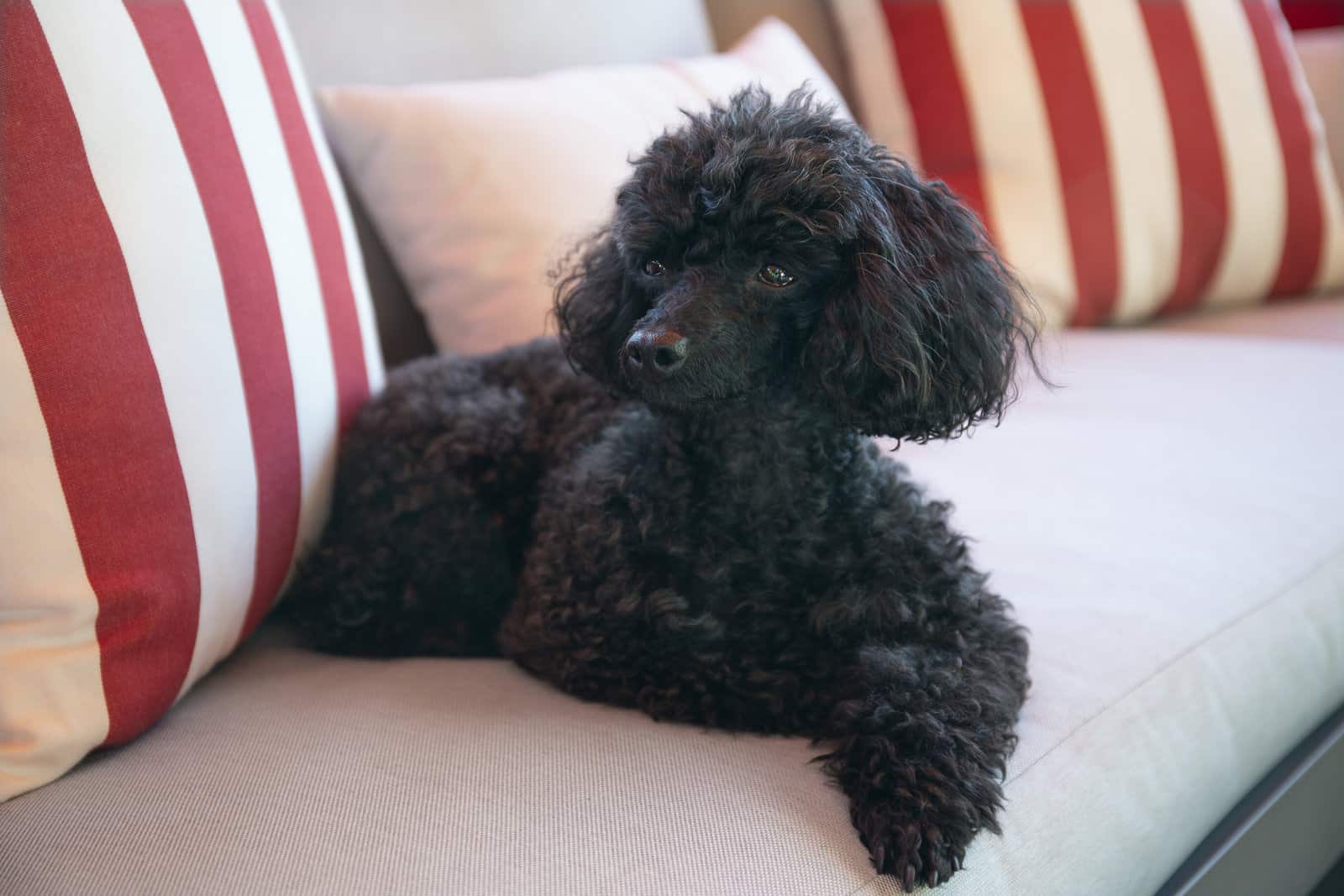
- A Shih Tz: 10 facts everyone should know about A Shih Tzu dog
A Shih Tzu is a toy breed of Chinese origin. Shih Tzus are a sturdy toy breed that weighs 9-16 pounds. Their long, silky, luxurious double coat comes in 14 different colours, including black, black and white, grey and white, red and white, and three other markings.
The “Star of Buddha,” a small white spot on the forehead of most Shih Tzus, is highly prized. Despite being classified as a Toy breed, the Shih Tzu demonstrates his sturdy nature with flowing, effortless movement and lots of drive.
He is the proud little aristocrat with his high head and tail carriage. The speed and energy are especially noticeable on a fully coated Shih Tzu as the silky hair floats. This Shih Tzu breed is frequently associated with China.
But these pups aren’t just pretty to look at; they’ll also tug at your heartstrings. Shih Tzus are highly loyal and affectionate toward their owners. For over a thousand years, they have mastered the lapdog role. Shih Tzus may be small in size, but they are big on personality and would do anything to be your best friend.
Shih Tzus are small dogs. For a small dog, this Shih Tzu has a lot of nicknames. In English, Shih Tzu means “small lion dog.” There are numerous nicknames for this dog, including “Under-the-table dog,” “Fu dog,” “shocked dog,” “sleeved dog,” “Tibetan dog,” and others.
They are often referred to as the chrysanthemum-faced dog because of their unusual facial fur that fans out like blossom petals. Because you have shorter fur, you appreciate the other characteristics of this amusing little pup.
They have long bodies and short legs. Shih Tzus are “off-square,” meaning they are longer than tall. They also appear to be quite sturdy for such a small dog. Shih Tzus are energetic little dogs, but they are still small.
These are not the kind of dogs who can keep up with you on long hikes. Your Shih Tzu will be thrilled and healthy with a brisk half-hour trot around the block and will only need an hour of exercise per day at most.
Long fur covers the floppy ears, and the heavily furred tail is curled over the back. The coat can be any colour, though white and grey blazes are common. The underbite, required by the breed standard, is a prominent feature.
The Shih Tzu has a long, luxurious double coat of hair—not fur—that needs to be brushed daily and groomed regularly. For dogs kept as pets, the skin can be puppy-clipped, but Shih Tzu in the show ring must have meticulously groomed long hair.
Because a Shih Tzu requires regular washing and brushing, shedding is kept to a minimum. Their stray hairs tangle with their fur, preventing them from reaching your floor or furniture. Shih Tzus are simple to train.
A Shih Tzu requires a lot of exercise. Your Shih Tzu will need an hour of exercise daily to stay fit and healthy. This should be divided into a few short walks with plenty of time for sniffing, exploring, and playing off-leash in a safe area.
Furthermore, your Shih Tzu will benefit from plenty of playtimes with you and short training sessions to keep their sharp minds active. Proper daily exercise and other factors such as hygiene and nutrition are among the most important requirements for keeping pets healthy.
When the weather does not permit outdoor activities, it can be adequately energised with fetching games. This is a walking dog, not a jogging dog. Despite its size, it can make an enjoyable biking companion and is equipped with a comfortable bike basket from which to catch the wind in its face. The Shih Tzu cannot tolerate high temperatures due to its short muzzle.
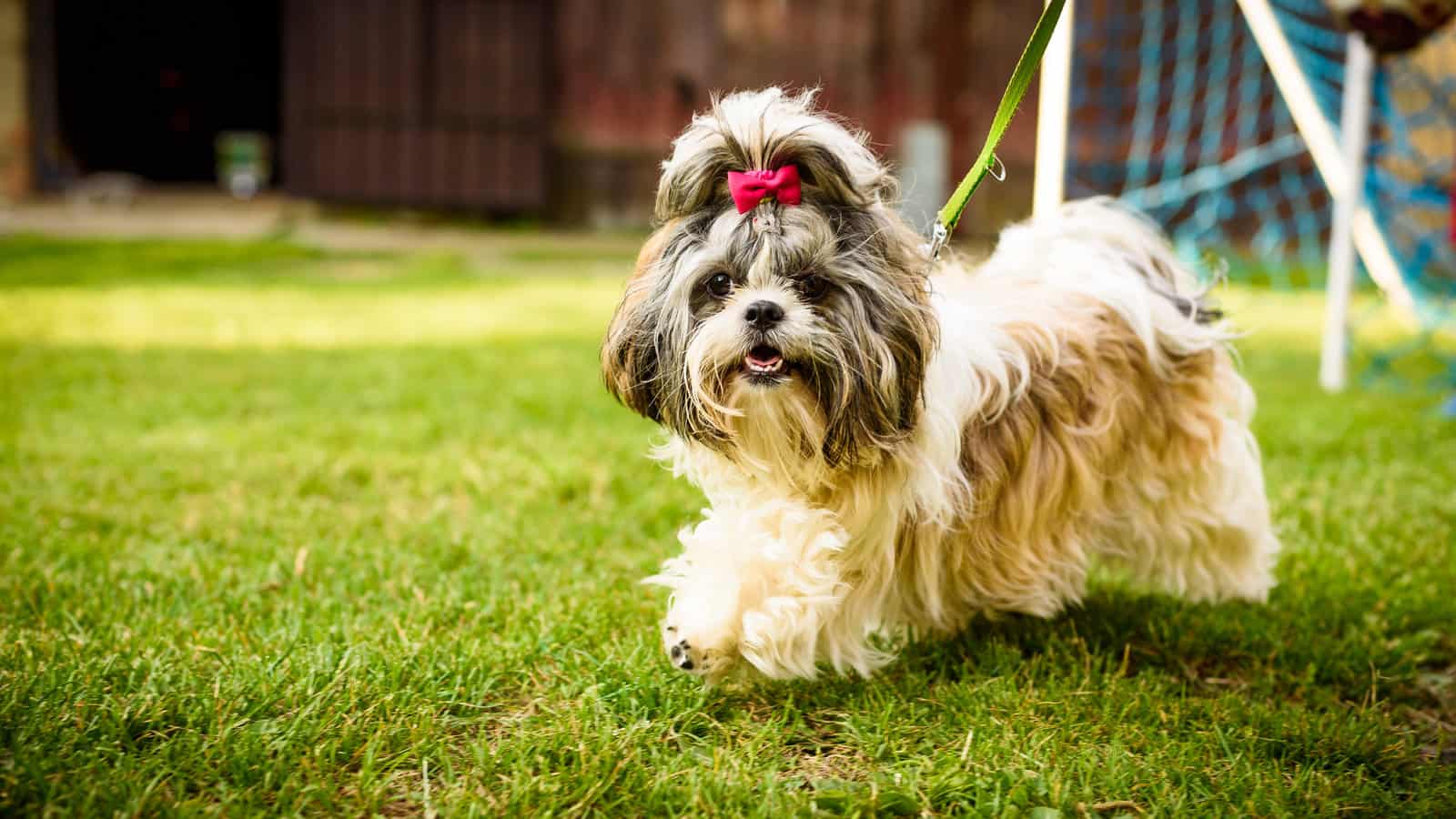
Schnauzer: 10 Schnauzer dog facts that everyone should know
A schnauzer is a compact, medium-sized dog with a long, floppy tail and a triangular beard. A Standard Schnauzer is a sturdy dog with a square body covered in a dense, harsh coat of salt and pepper or solid black and an erect docked tail.
The head is rectangular in shape, with arched brows above dark brown eyes, a bristly moustache and beard, and cropped or natural ears. The word Schnauzer comes from the German word schnauze, which means muzzle and can be interchanged with the moustache.
This name was given to the dog species because of the prominent walrus moustache and large, bushy brows. Schnauzer dogs have two coats, both short on the dog’s body. The dog’s inner skin is soft, while the outer coat is wiry and coarse.
This gives the dog’s fur a distinct appearance. People believe that dogs with double coats will inevitably shed excessively. However, as Schnauzer demonstrates, it does not shed much. These dogs are considered to be the most hypoallergenic breed.
Schnauzers are compact dogs with a coarse salt-and-pepper coat and a distinctive “moustache.” They are available in three sizes: giant, medium, and miniature. Let us investigate this unusual dog breed’s personality, needs, and peculiarities!
Schnauzers, whether Miniature or Standard, are an innovative, high-energy breed. Giant schnauzers make excellent watchdogs, guard dogs, and vermin hunters. Still, they are also popular as companion pets due to Irish water spaniels’ loyal nature and hypoallergenic coats.
Schnauzers get along with other pets well, including dogs and cats. Schnauzers are solid and patient dogs that make excellent companions for children of all ages. Schnauzers get along well with other dogs and cats but should be kept away from small pets like rats, mice, and guinea pigs because they were bred to hunt rats.
Schnauzers dislike unfamiliar dogs and may become aggressive towards them. Schnauzers, in general, make excellent family pets and are a perfect choice for owners with various lifestyles. Schnauzers will fit in fairly easily with the proper training, whether you have young children or live in a household with other adults.
While many terrier breeds do not get along with other dogs, Miniature Schnauzers are generally friendly with their canine companions. They may be standoffish around larger dogs and bossy around a few smaller dogs.
Schnauzers are solid and tenacious dogs, and their longevity may be partly due to this aspect of their personality. Of course, attitude varies with size:
- Miniature schnauzers are only for the company.
- Medium schnauzers are good guard dogs.
- Giant schnauzers are defence dogs.
They are, however, always reasonable dogs who are easy to train and learn almost everything quickly. They require a lot of physical activity and must be constantly stimulated. They enjoy spending their time with their owner.
This breed is well-known for being an excellent companion wholly dedicated to their family members. They are not necessarily “one-person dogs” but value all members of their “pack.” The Standard Schnauzer is an excellent family dog because it is playful and tolerant. They also make excellent watchdogs, alerting anyone to an intruder who might threaten their home or family.
Schnauzers shed little, but they have a fair amount of dog fur. Miniature Schnauzers shed very little compared to other breeds, so you can spend less time vacuuming and more time playing with your pup. Even though this breed’s coat does not shed much, it still requires care.
He must have it clipped or hand-stripped regularly to keep his coat free of mats and in pristine condition. Schnauzers are compact, sinewy, square-built dogs with stiff, wiry coats and bristling beards and eyebrows.
Schnauzers shed, but the amount of shedding is meagre, and schnauzers should be chosen by people who want a dog with low shedding. You might think that because Miniature Schnauzers are hypoallergenic and shed very little, they don’t need much grooming or frequent haircuts, but this is not the case.
In fact, their low shedding has the opposite effect, and you’ll need to groom your Schnauzer’s coat regularly to keep your pup’s coat healthy. Schnauzers are intelligent and can be taught to perform tricks, retrieve objects, and behave in various ways.
Miniature Schnauzers are also extremely intelligent and have been known to cause mischief if given the opportunity. They’ll quickly figure out how to open cabinets to get food, toys, or even your shoes. They like to be in charge because they enjoy being the centre of attention.
They can become more submissive with proper training and make excellent pets for active families. Miniature Schnauzers, as an intelligent and outgoing breed, enjoy learning tricks and spending time training with their owners.
They can, however, be headstrong and are known to have selective hearing. As a result, Miniature Schnauzers require consistent and precise training and plenty of positive reinforcement to keep them engaged.
Short and enjoyable training sessions will also help to keep your rambunctious Miniature Schnauzer entertained. People, dogs, and standard schnauzers make excellent companions. They can be challenging to train because they are both intelligent and spirited.
Though they can be stubborn, Schnauzers have above-average intelligence and require mental and physical stimulation. Even with Mini Schnauzers’ health issues, these small dogs are great, low-shedding companions for your family.
According to the breed standard, Mini Schnauzers live 12 to 15 years old. Comparatively, Standard Schnauzers live to be 13 to 16 years old.
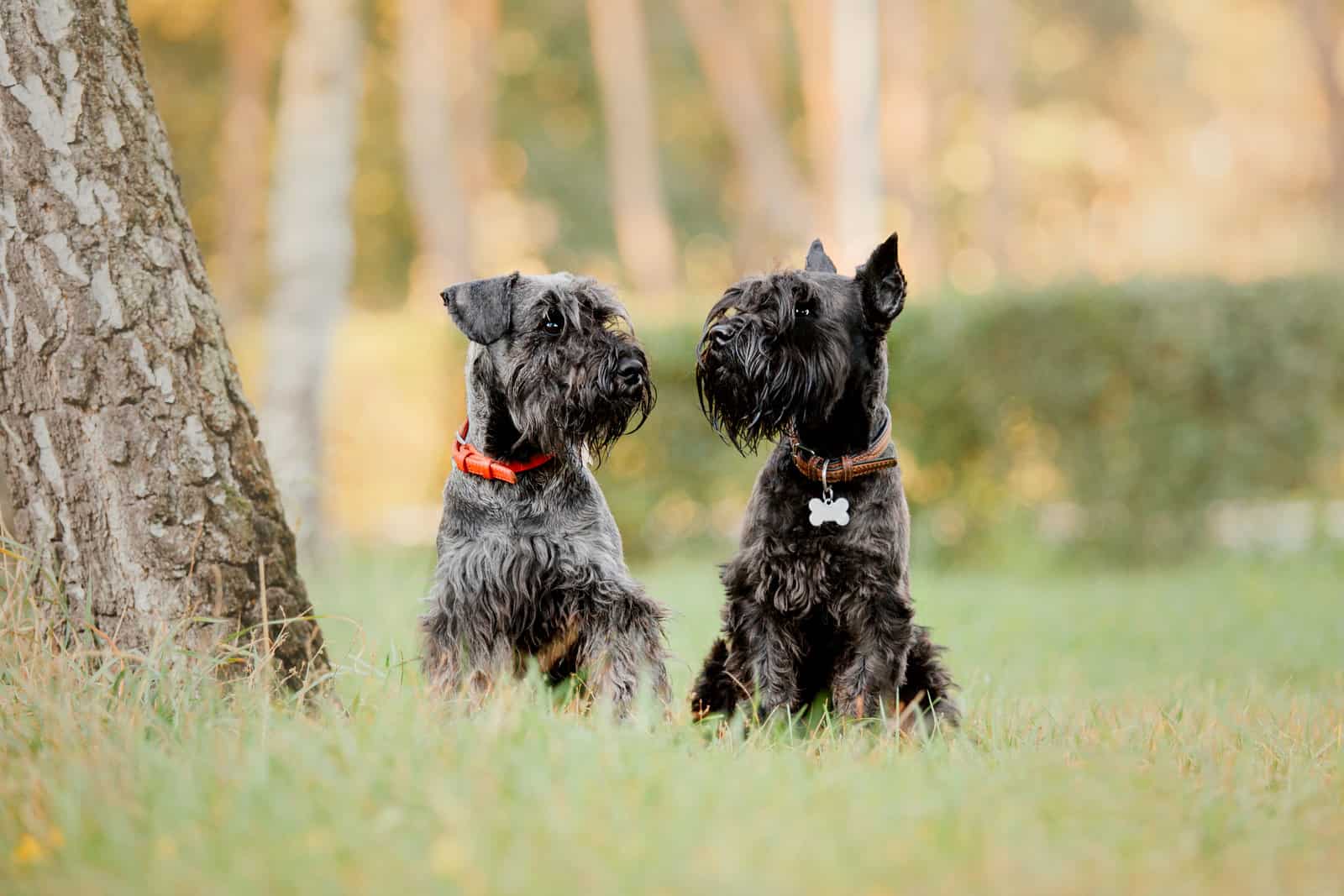
Tiny Terriers: 10 facts everyone should know about A Tiny Terrier dog
These miniature terriers aren’t as quiet as you might think. They are terriers at heart, which means they are known for being aggressive and brave. They make excellent city dogs and have prominent personalities for such small dogs.
Not to mention that they are a hypoallergenic breed. With this pup, you can’t go wrong! What is the smallest dog breed in the world? Numerous popular small dog breeds make excellent companions, ranging from Dachshunds to Yorkshire Terriers.
More miniature puppies are ideal for those with limited space, whether you are a first-time pet parent or have previously had dogs. For families with young children, a tiny terrier is an excellent choice. Many people prefer smaller dogs because they are less expensive, live longer lives, and are often ideal for apartment living.
However, not every toy dog wants to be a lap warmer, and some small dogs may be inappropriate for families with small children. This small breed thrives on affection and is ideal as a companion or lap dog. The breed gets along well with other animals and small children.
It is also an excellent breed for the elderly because it does not require much exercise and has a calm, patient, affectionate temperament that adapts to any environment. A tiny terrier requires minimal exercise.
Let’s face it: a small-breed puppy is busy, curious, and always on the move (except when he conks out and takes a well-deserved nap). Playing with or walking should be done cautiously because his bones are still soft and pliable.
At this stage in his development, avoid overdoing it. Long walks or strenuous exercise should be avoided until your little friend is more developed. You can help your small dog look and feel his best with a little effort!
Walks can be his favourite part of the day. Consider all the sights, sounds, and smells he encounters on a walk! If your dog becomes overly excited, take a short romp in the yard with a ball to burn off some energy before putting paws on the pavement. A tiny terrier is a small, sturdy dog.
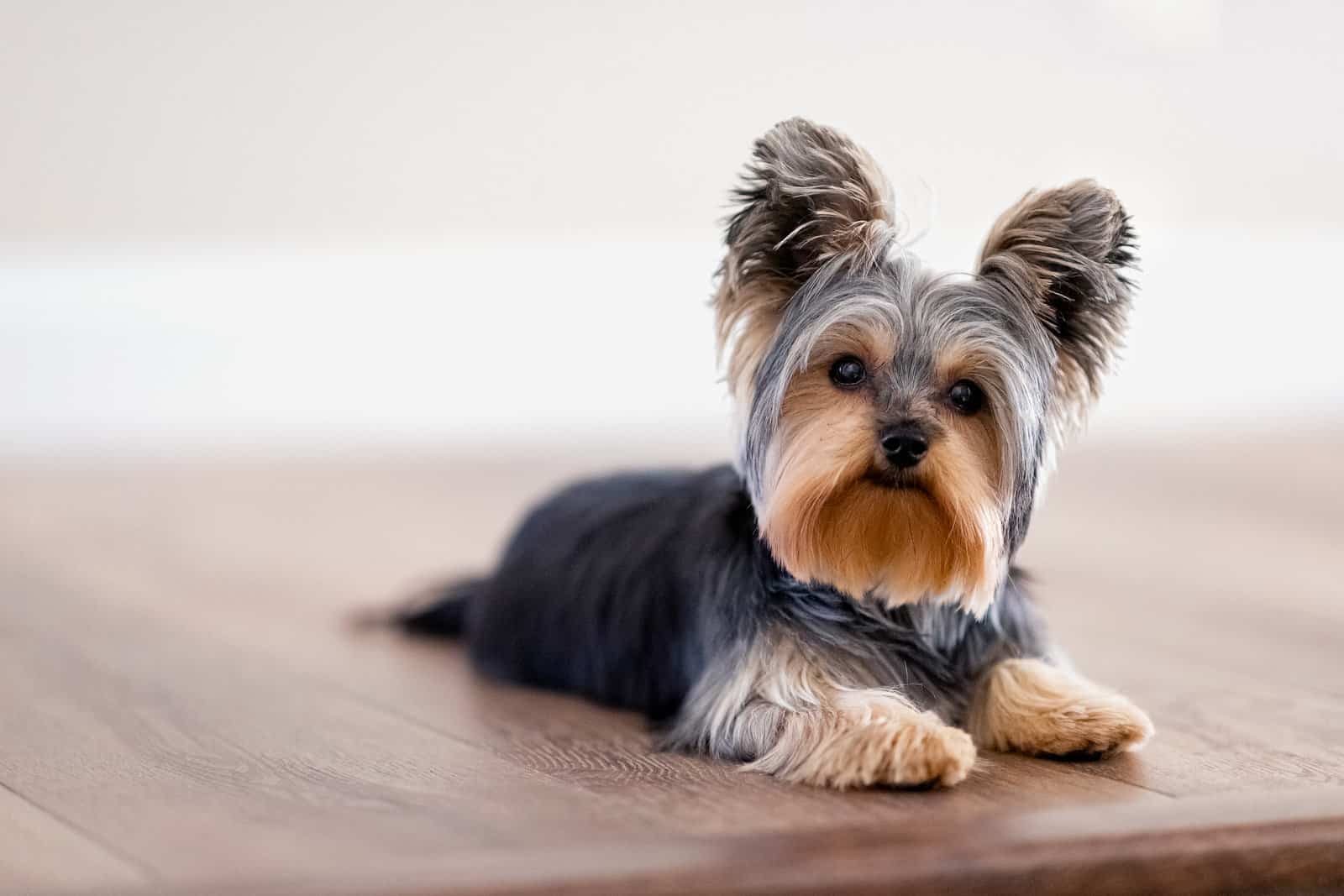
A Bichon Frise: Expectations vs Reality
No other dog is as terrific as the Bichon Frise. Bichons are little yet mighty dogs with prominent dog personalities. They rapidly gain the affection of everyone they meet. They will reward their owners with years of devotion and love with appropriate care.
The Bichon Frise is a small, white, fluffy dog with a big personality. The French and Belgian Kennel Clubs both recognise the breed. During the French revolution, the Bichon Frise fell out of favour with the aristocracy.
Following this, the Bichon Frise worked as a street musician, performing with organ grinders and other musicians. The Bichon Frise almost became extinct during World War I, and only the devotion of French and Belgian breeders saved the breed.
A dog’s personality, character, and temperament are determined by breeding. The Bichon Frise is an excellent family pet because it is friendly, affectionate, and enjoys being around its human family members.
It should primarily be an indoor dog because of its loyalty to its human family members. Bichon Frises are not particularly suited to living outdoors. This breed is always ready to play a game, take a walk, or snuggle up for a cuddle. Young and old alike can make an excellent companion thanks his fantastic attitude toward life.
Newfies: Will Newfies Ever Rule the World?
Newfies have a long history as working dogs in Newfoundland, Canada. They assisted fishermen, performed water rescues, and pulled fishing nets and carts. European fishermen are thought to have brought the forbears of Newfies to Newfoundland.
Their precise pedigree is extensively debated, but most theorists agree that Newfies are descended from Great Pyrenees dogs and black retrievers. The origin of the Newfoundland is unknown, but these ‘gentle giants’ are admired for their incomparable water-rescuing ability.
Thanks to their massive size and strength, they are also renowned for their hauling and fetching capabilities. The Newfies are slow and lazy. They love playtime, daily walks, and swimming. Apartments or condominiums are suitable for them as long as they receive adequate exercise. They are relatively inactive indoors. A small fenced yard will be fine for them.
The Pembroke Welsh Corgi: 10 facts everyone should know about A Pembroke Welsh Corgi dog
A Pembroke welsh corgi is the smallest of the three welsh corgi breeds. Pembroke Welsh Corgis (also known as Pembrokes, PWCs, or Poems) are the smallest breed recognised by the American Kennel Club’s Herding Group and the United Kennel Club.
They may also have a small blaze on their heads. Pembroke’s heads are shaped similarly to fox heads. Their eyes are dark and oval-shaped, and their ears are upright.
The Welsh Corgi was, in fact, a herding dog. Isn’t it a little too small for this job? No, its size is ideal because it can reach the ankles of cows and nip them, pointing them in the right direction. Another advantage of being so small was that the cattle found it challenging to kick at the dog (well, nobody wants to be nipped).
It is unknown how the Pembroke Welsh Corgis arrived in Wales. Perhaps they are descended from the Swedish herding dogs “Västgötaspets,” which the Vikings may have brought to Wales in the ninth or tenth century. They could have also travelled to Wales with the Flemish.
This allows him to work in the fields all day. Many puppies are lazy and overfed by their owners if they are not working dogs. Causing them to eat more pork than they should! The most common breed of Welsh Corgi is the Pembroke.
Pembroke Welsh corgis were initially bred in Wales as livestock and family dogs. With a long frame and a low, sturdy build, they are considered a true dwarf breed. Pembroke Welsh corgis have a double coat that helps them resist the elements but also shed a lot.
They are brave, affectionate, and agile dogs who enjoy having a purpose and being with family. The majority of Pembroke Welsh corgis do not have tails. Pembroke Welsh Corgis are well-known as Queen Elizabeth II’s preferred breed, with more than 30 Royal corgis owned during her reign.
Although these dogs have been favoured by British royalty for over seventy years, their popularity and demand among the British public have recently declined. They are, however, still prevalent in the United States.
Annual “Corgi Meetups” are held in New York, Boston, Los Angeles, and San Francisco, where hundreds of dogs and their owners gather to spend the day. A Pembroke Welsh Corgi is the most active breed of Welsh Corgi.
The Cardigan is a devoted and energetic companion who excels in herding and agility competitions. Corgis are generally healthy dogs with a lifespan of 12-15 years. The Welsh Corgi is a cheerful, energetic, and friendly dog.
They are as active and quick as their spirits, requiring challenging tasks and exercise. It is brilliant. Welsh Corgis make excellent watchdogs because they are wary of strangers (as well as unfamiliar dogs and pets) and enjoy barking.
It is amicable once it gets to know them and realises they pose no threat. When left alone for too long, the Welsh Corgi begins to destroy things. Dogs, after all, are pack animals. We’d probably start freaking out if we were alone for an extended time. Please remember that your dog suffers just as much as you do.
The Pembroke Welsh Corgi enjoys socialisation. This breed is known to want to be involved with his family and to keep his mind busy. In terms of field decisions, he is active and bold. As a companion, this vivacious Corgi is protective of his family, alerting them to any strangers and defending them against any dangers that may be present.
The Pembroke Welsh Corgi, wary of strangers, must be taught how to accept the presence of people they do not know at a young age. The Pembroke Welsh Corgi is best suited for children who understand how to care for the breed.
In response to play, the Corgi may nip at heels when he becomes excited. If not properly trained, the Pembroke Welsh Corgi is known to bark a lot. However, the Pembroke Welsh Corgi is simple to introduce because of his intelligence.
Because of his original function of herding sheep, he has a strong work ethic and enjoys staying busy. He performs best when given long walks and excels in agility, rally, tracking, and herding. The Pembroke Welsh Corgi gets along well with other dogs and animals.
A Pembroke Welsh corgi requires approximately two and a half hours of daily exercise. To remove all dead hair from the Pembroke Welsh Corgi’s fur, brush it weekly with a rubber curry brush. Brushing should ideally take 10 minutes to altogether remove loose hair.
This breed would do best in a living situation with plenty of running space and a daily walk schedule. Pembroke Corgis are surprisingly energetic dogs requiring at least 45 minutes of intense exercise daily. They were initially bred as working dogs with excellent shepherding skills.
A healthy diet and exercise routine can keep your Corgi happy and healthy for a more extended time. Pembroke Welsh corgis are apartment-friendly but require daily walks and play sessions. Because of their short legs and long back, you may need to assist them in getting onto and off furniture to avoid injury. Pet stairs can be helpful in this situation.
Dalmatian: How to Explain Dalmatian to a Five-Year-Old
A Dalmatian must be trained with praise and a lot of love, not harsh training. It is susceptible and remembers if it is maltreated. A Dalmatian learns quickly, but you must not neglect to provide it with love and praise.
Do not overindulge your dog, either. If the Dalmatian notices its owner is not acting as a strong leader, it will try to seize ‘the throne.’ It is crucial to be firm and direct while training this breed. The Dalmatian, with a zest for living, an expressive personality, and unwavering loyalty, might be the best dog breed for your family if you want a dog with a distinct appearance.
No one knows when or where the Dalmatian’s spots were first produced. Although Dalmatians are old, they were once carriage dogs and were firefighters before that. Because Dalmatians are intelligent and robust runners, they were well-suited to assist horses in calming down as they ran alongside wealthy English lords’ carriages.
Before fire trucks were drawn by horses, people used to hire Dalmatians to help control and soothe horses. Because horses were reluctant to approach the burning buildings. That must have seemed like an excellent pairing of brains and brawn.
It didn’t hurt that Dalmatians were known for their incredible stamina and strength. You don’t need to adjust your eyes—those spots are all over the sweet and intelligent Dalmatian (known as Dals for short) (known as Dals for short).
Despite working as carriage dogs, circus performers, and firefighters’ companions, Dalmatians are desperate to become your family’s most excellent four-legged pal. Despite being less commonplace than other mixed dog breeds, Dalmatian mixes are popular among pet lovers.
Adios!
Choosing the right dog for your lifestyle is difficult because most dogs are wonderful companions. However, this decision is vital since living with a dog has many advantages and disadvantages. Owning a dog can make you more healthy but also make you more allergic.
Additionally, adopting a dog from a shelter can be very rewarding. Choosing the right dog for your lifestyle often involves considering health, allergies and temperament. Many people have allergies to dogs, but some breeds are less allergenic than others.
Small dogs such as pugs or Pomeranians are usually good choices if you’re allergic to dogs. Dogs that don’t shed or have hypoallergenic fur are also good options. These include Chinese crested dogs, Maltese and Chinese Crested mixes and hairless dogs such as spaniels and chihuahuas.
Most of these low-allergen breeds are also good choices if you live in a small place since they don’t need much space. However, larger non-shedding dogs like labradors and golden retrievers can work, too; just be sure to give them plenty of outside exercise space.
Many people want to adopt a rescued dog from a shelter or abandoned home instead of buying one from a breeder or pet store. This is a noble choice since adopting a dog saves it from ending up as someone’s dinner or being euthanised at an animal shelter.
Unfortunately, adopting a rescue dog can be risky since many have behavioural or health problems that must be fixed before becoming pets. Pet stores avoid dealing with the issue of unwanted animals by never allowing customers to take puppies or kittens home without signing a contract to spay or neuter the animal later— basically condemning them to a life of loneliness and deprivation.
Adopting an adult dog from a shelter is much better than buying one from a pet store or breeder. Dogs taken from their mothers before eight weeks old develop behavioural problems due to this early separation; adopting older dogs saves them from this fate.
Additionally, dogs adopted from shelters typically receive medical treatment and behavioural training before being adopted; this helps avoid more problems after bringing them home. The best rescue dogs are healthy adult mutts— they’ll have fewer genetic health problems than purebreds and tend to have stable temperaments since they haven’t been through any traumatic breeding programs or puppy mills.
Choosing the right dog for your life depends on your personal preferences and circumstances. Considering allergies is important since adopting a rescue dog is usually worth the effort it takes to help with their medical problems.
Adopting an adult dog avoids issues with early separation that causes behavioural problems in puppies and kittens. Choosing low-allergen furred breeds makes sense if you’re allergic to dogs otherwise. In the end, we hope this article helped you choose your next furry friend to explore the wonders of the world because the world is full of wonders!
If you enjoyed learning about this facinating animal why not check out more fantastic facts about other animals: Koalas, Land Animals, Sharks, Raccoons, Moon and Sun Bears, Rats, Chickens, Cats, Pandas, Monkeys and Whales.
Why not subscribe to our LearningMole Library for as little as £1.99 per month to access over 1000 fun educational videos.


Leave a Reply